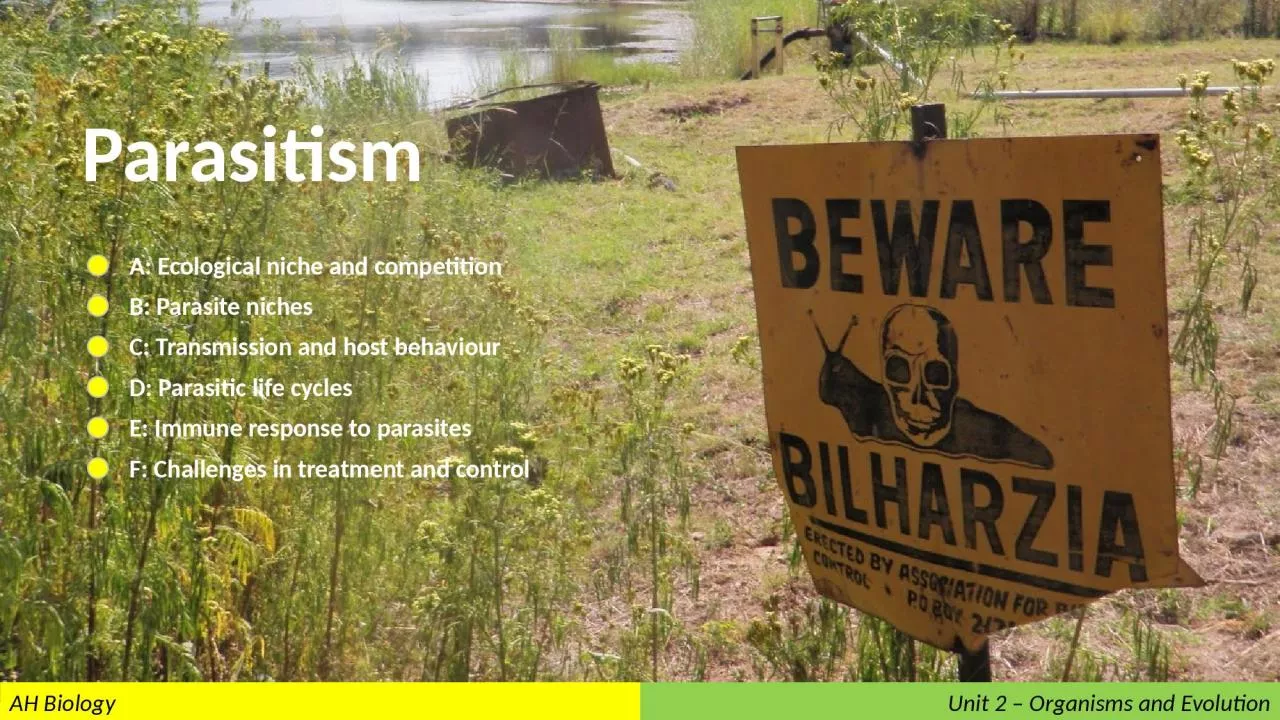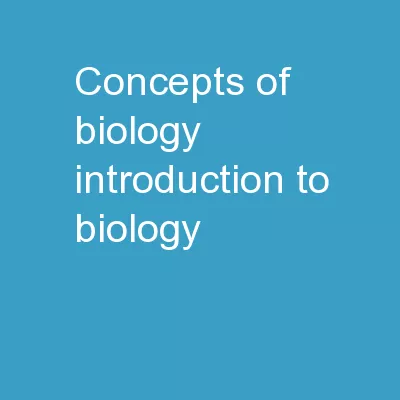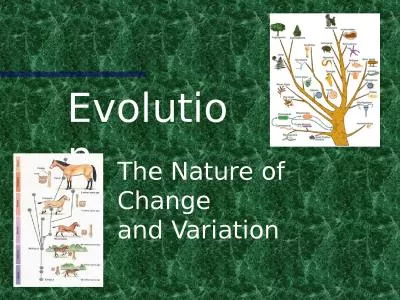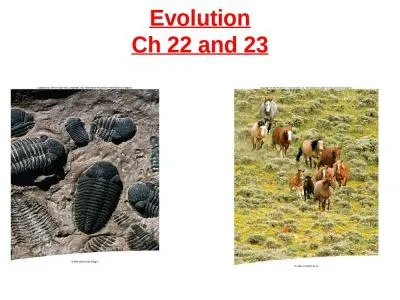PPT-AH Biology Unit 2 – Organisms and Evolution
Author : gabriella | Published Date : 2022-06-11
Parasitism A Ecological niche and competition B Parasite niches C Transmission and host behaviour D Parasitic life cycles E Immune response to parasites F Challenges
Presentation Embed Code
Download Presentation
Download Presentation The PPT/PDF document "AH Biology Unit 2 – Organisms and Evol..." is the property of its rightful owner. Permission is granted to download and print the materials on this website for personal, non-commercial use only, and to display it on your personal computer provided you do not modify the materials and that you retain all copyright notices contained in the materials. By downloading content from our website, you accept the terms of this agreement.
AH Biology Unit 2 – Organisms and Evolution: Transcript
Download Rules Of Document
"AH Biology Unit 2 – Organisms and Evolution"The content belongs to its owner. You may download and print it for personal use, without modification, and keep all copyright notices. By downloading, you agree to these terms.
Related Documents














